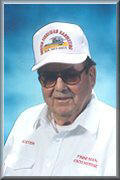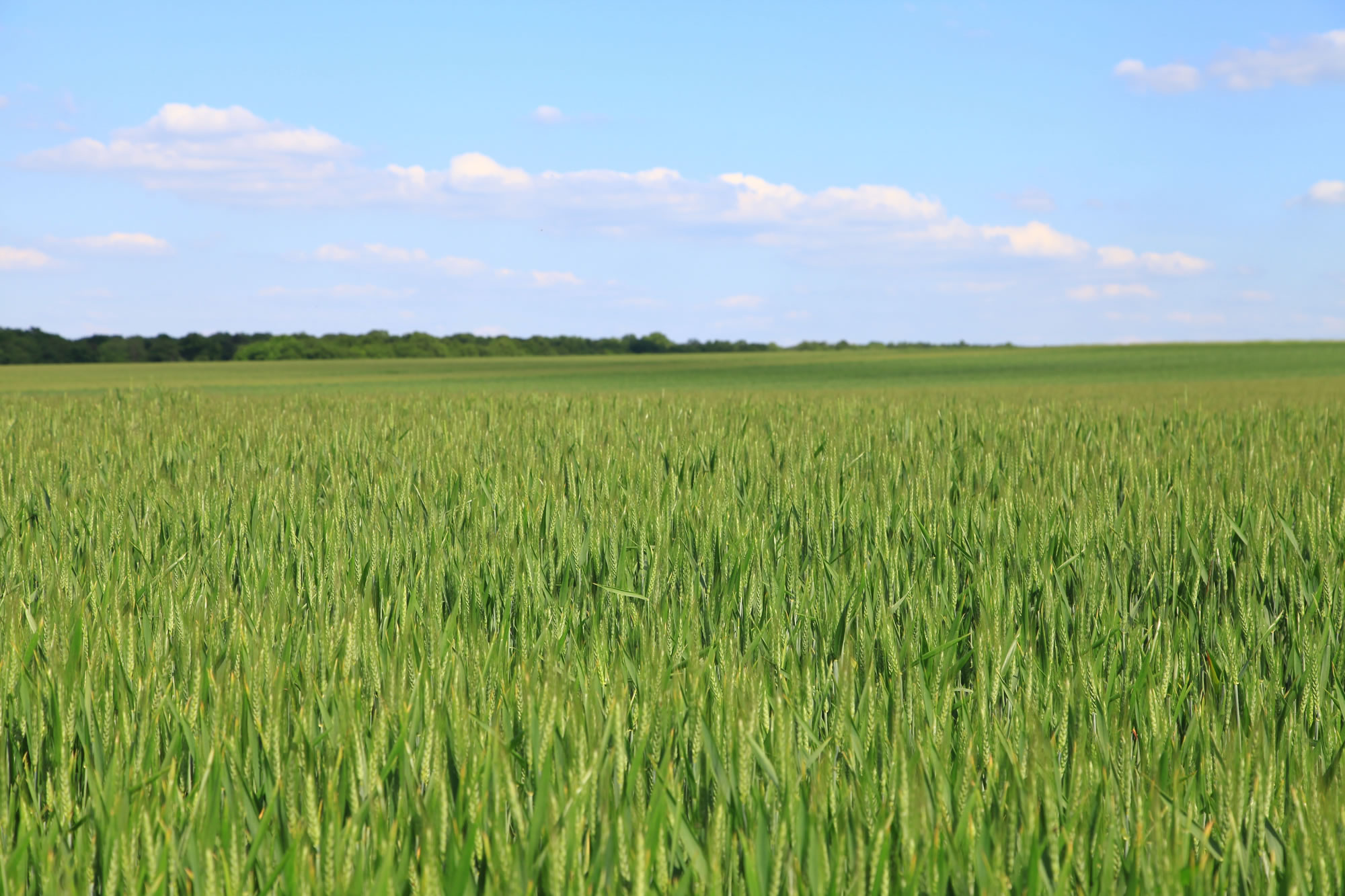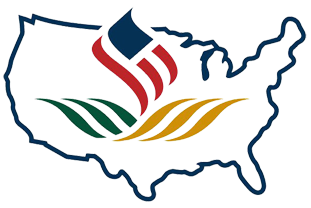The U.S. Custom Harvesters Hall of Fame
INDUCTEES OF USCHI HALL OF FAME
 Buster Finneman, Golva, ND - (1999)
Buster Finneman, Golva, ND - (1999)
Buster Finneman of Golva, North Dakota was selected into the "USCHI Hall of Fame."
Buster's harvesting story:
He began farming in 1940 when Buster rented 80 acres
of land from his dad (Mike Finneman) on a 1/3-2/3
basis. He planted Flax for his first crop. One week
Buster went to check the Flax and found beautiful
"Flax Balls". The next week he checked and
all the Flax Balls were laying on the ground eaten
by grasshoppers. It was a disaster. In 1943 Buster
and Florence married at St. Phillips church. They
cleaned out a neighboring house they had used as a
wheat storage bin. After that, children started arriving:
Katy, Alicia, Ruth, Donnella, Marie, David and Steve.
(Buster and Florence were creating their own harvest
crew! Buster and his wife Florence have been married
for 55 years and raised five daughters and two sons
on the harvest trail.)
In 1944, Buster's cousin Roman went with the first "Harvest Brigade" and recruited buster. In 1945, Buster went south again with the "Brigade," it was a program sponsored by the Massey Harris Company to get people to buy combines. Because of the war, getting a government permit to purchase a combine was necessary. Buster bought his for $2500 at Clark Equipment in Beach, ND and took possession of it near Vernon, Texas. The combine was red and had a 12-foot header and it was self propelled. The trucks were Fords and Chevies which cost about $800. They loaded the combine onto the trucks and the headers stuck out over the cab. The trucks could only go 35 miles an hour. It took five days to get to Texas from North Dakota. The days were long and the work was hard as there were no cabs on the machines and the wheat had to be shoveled out of the trucks by hand. Many times we would work against tornado warnings and rain. Times were hard. The farmer's wife furnished meals or you paid 35 cents. Motels were not available so the crew slept at the farm, often on army cots or in the truck cab. Sometimes their bed was in the back of the truck box on a load of wheat. Some farmers would even hire them for $10.00 to sleep on the wheat pile with a shot gun, so no one would steal the wheat. The price of gas then was 15 cents a gallon and diesel fuel was non existent to harvesters. They paid the crew members $150.00 a month plus meals. Cutting fees were $2.50 per acre and the trucking fee was five cents a bushel hauled up to 10 miles.
In 1945-1950 the operation expanded to 3 combines with 14 feet headers. Many relatives of Buster and Florence were used as hired workers. The operations expanded until the years of 1955-1958 when there were no crops and Buster did not go harvesting. In 1960 a cook shack was purchased and the meals were cooked and taken out to the fields. Sleep trailers were purchased because there were few motels and the farmers no longer wanted to house or feed the crew.
Work days were long, some of them being from 8 am to midnight and many went until 2-4 am in the morning. If the weather was fit they would cut. If it rained, the men would repair the machines, wash clothes, call home and wrestle. There were many tornado warnings and once a tornado tipped one of their trailers over. In the early days there was no such thing as insurance, so any accident was costly.
Grain elevators started popping up in the 60's and 70's because the government was paying for grain storage. The largest elevator built was in Amhearst, Colorado. It was quite a sight sitting out on the plains, you could see it for miles.
Over the years Buster added more combines, newer trucks and airplanes. Some say he could fly low and drop parts out the window, having them land exactly where he wanted them to land.
Buster has proven his dedication to the harvesting industry with over 50 years of his life. During these years he has developed an extended family throughout the central part of the United States. This family is composed of farmers, service station employees, and elevator personnel to name a few. He has shown this family the professionalism and integrity of the harvesting industry through years of hard work. He made the run form Texas up to North Dakota and sometimes into Canada. Buster's dedication to the industry has also been shown through his participation in the USCHI organization. He places high importance on attending the Annual meetings and encourages his crew and family to join him at these events.
The consensus of those who know him, when asked, "Just who is Buster Finneman," would say, he is a "Custom Harvester".




